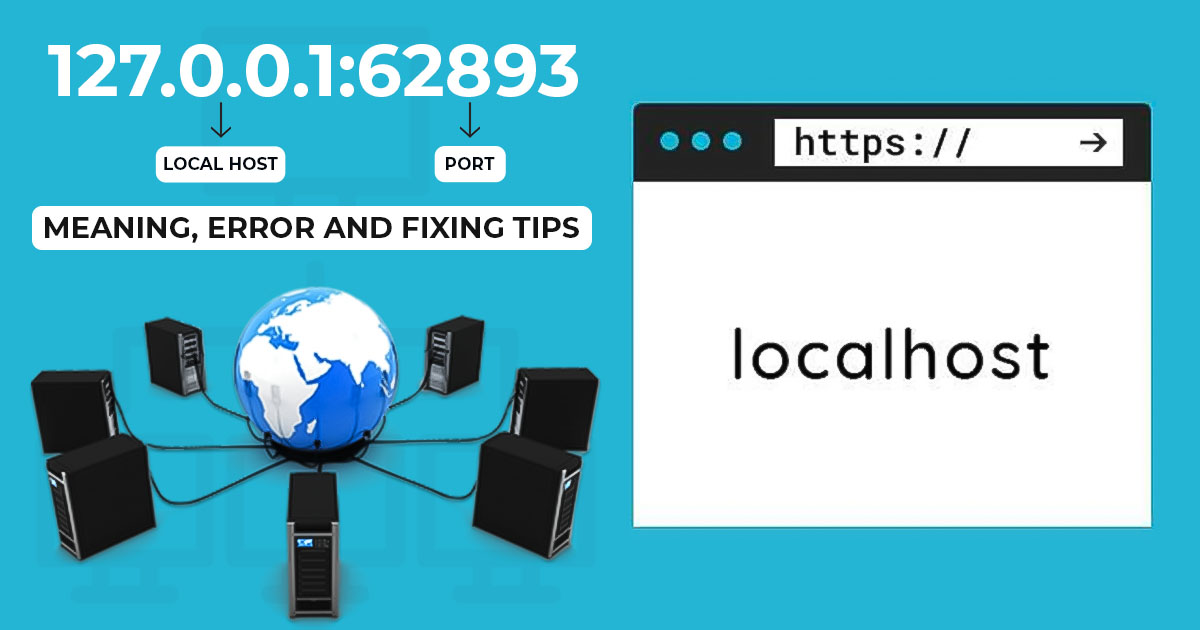Introduction to 127.0.0.1:62893
If you’re diving into the world of networking, web development, or IT, you’ve probably encountered the term “127.0.0.1:62893” and wondered what it’s all about. While it might seem like a jumble of numbers at first glance, this combination actually plays a crucial role in the functioning of your local network environment. In this article, we’ll unravel the mystery behind 127.0.0.1:62893, explain its significance, and explore how you can leverage it in your local development projects.
Understanding Localhost: What is 127.0.0.1?
127.0.0.1 is known as the “localhost” address, which is a loopback IP address used to establish an IP connection to the same machine or computer that’s being used by the end-user. Essentially, when you type “127.0.0.1” into your web browser, you’re telling your computer to connect to itself. This is incredibly useful for testing and development purposes because it allows you to run server environments on your own machine without needing to access external networks.
The Role of 127.0.0.1 in Networking
In the context of networking, 127.0.0.1 serves as a loopback address, which is a special IP that routes traffic back to the originating device. This is particularly useful for developers and network administrators who need to test network software without sending data over an actual network. The loopback function ensures that your computer communicates with itself, allowing you to test services like web servers, database servers, and other network-related software locally.
Why Developers Use 127.0.0.1
For developers, 127.0.0.1 is a critical tool. It allows them to set up local testing environments, ensuring that their code works correctly before deploying it to live servers. By using 127.0.0.1, developers can simulate a network environment without risking any external interference or needing an active internet connection. This makes debugging, testing, and optimizing much easier and more efficient.
What Does the Port Number 62893 Signify?
When you see “127.0.0.1:62893,” the numbers following the colon represent a port number. Ports are virtual endpoints in an operating system, allowing multiple services or applications to run simultaneously on the same machine without interference. Each port is associated with a specific process or service, which listens for incoming network traffic.
Importance of Port Numbers in Networking
In the world of networking, port numbers are vital because they allow different types of network traffic to be separated and routed to the correct application. For example, web traffic typically uses port 80 for HTTP and port 443 for HTTPS. However, in a development or testing environment, you might use a different port number—like 62893—to avoid conflicts with other services or to run multiple instances of a service on the same machine.
How Port 62893 is Used in Local Development
Port 62893 is just one of many possible port numbers you might encounter in a local development setup. When working with web applications, APIs, or other networked services, developers often specify a unique port number to distinguish between different instances of the service. This is especially useful in environments where multiple applications are being developed and tested simultaneously. By assigning each application a different port, developers can run them all on the same machine without interference.
Setting Up 127.0.0.1:62893 for Local Development
Now that you understand the basics of 127.0.0.1 and port 62893, you might be wondering how to set up your own local development environment using this configuration. The process is straightforward and involves configuring your development tools to use 127.0.0.1 as the IP address and specifying 62893 as the port number.
Configuring Your Environment
To configure your environment, you’ll typically need to modify the settings in your web server, application server, or development environment. For instance, if you’re working with a local web server like Apache or Nginx, you can configure the server to listen on 127.0.0.1 and use port 62893. This might involve editing configuration files or using command-line tools to specify the IP address and port.
Common Use Cases for 127.0.0.1:62893
There are several common use cases for using 127.0.0.1:62893 in local development:
- Testing Web Applications: Developers can test their web applications locally by configuring them to use 127.0.0.1:62893. This allows them to see how the application behaves before deploying it to a live server.
- Running Multiple Services: If you’re running multiple web services on the same machine, using different port numbers like 62893 ensures that each service operates independently without port conflicts.
- Debugging and Optimization: By running services on 127.0.0.1:62893, developers can debug and optimize their applications in a controlled environment, ensuring that they perform well under real-world conditions.
Troubleshooting Common Issues with 127.0.0.1:62893
While using 127.0.0.1:62893 is generally straightforward, you might encounter some common issues that require troubleshooting. These issues can range from port conflicts to firewall settings, and understanding how to resolve them can save you a lot of headaches.
Port Conflicts and Resolution
One common issue is a port conflict, which occurs when multiple services attempt to use the same port number. If you encounter this issue, you can resolve it by either shutting down the conflicting service or assigning a different port number to one of the services. To check which services are using a specific port, you can use command-line tools like netstat or lsof on Unix-based systems.
Firewall Settings and Accessibility
Another potential issue is firewall settings that block traffic to and from port 62893. Firewalls are designed to protect your system by controlling incoming and outgoing network traffic based on predetermined security rules. If your firewall is blocking port 62893, you’ll need to configure it to allow traffic through this port. This might involve creating a new rule or modifying an existing one, depending on your firewall software.
Security Implications of Using 127.0.0.1:62893
While 127.0.0.1 is a secure loopback address, it’s essential to be aware of the security implications of using it with different port numbers like 62893. Proper configuration is crucial to ensure that your local environment remains secure and that no unauthorized access occurs.
Ensuring Local Access Only
By default, 127.0.0.1 restricts access to your local machine, meaning that only processes running on your computer can communicate with services on this IP. However, if you accidentally expose this port to the outside network, you could be opening up a potential security risk. To ensure local access only, double-check your server and firewall configurations to confirm that 127.0.0.1:62893 is not accessible from external networks.
Monitoring and Logging
Keeping an eye on the traffic to and from 127.0.0.1:62893 is also a good practice. By enabling logging on your web server or application server, you can monitor for any unusual activity that might indicate an attempted breach. Regularly reviewing these logs will help you spot and address potential security issues before they become serious problems.
Conclusion
Understanding the significance of 127.0.0.1:62893 in the context of local development and networking is crucial for developers, network administrators, and IT professionals. This seemingly simple combination of numbers plays a vital role in creating secure, efficient, and isolated development environments. By correctly configuring 127.0.0.1:62893 and being aware of its potential pitfalls, you can leverage this powerful tool to enhance your local development workflow.
FAQs
- What is 127.0.0.1:62893 used for? 127.0.0.1:62893 is used in local development environments to test and run web applications or services on your local machine. It represents the localhost IP address with a specific port number, allowing developers to simulate network environments without accessing external networks.
- How do I resolve a port conflict with 62893? To resolve a port conflict, you can either close the service that’s using port 62893 or reassign the conflicting service to a different port number. Tools like
netstatorlsofcan help identify which services are using specific ports. - Is 127.0.0.1:62893 accessible from external networks? By default, 127.0.0.1 is only accessible from the local machine, meaning external networks cannot access services running on this IP and port. However, misconfigurations could potentially expose this port to external access, so it’s essential to verify your settings.
- Why is 127.0.0.1 important in networking? 127.0.0.1 is a loopback IP address used to route traffic back to the same machine, enabling developers and network administrators to test and debug network services locally without involving external networks.
- Can I change the port number from 62893 to something else? Yes, you can change the port number if needed. Simply configure your development environment or server settings to listen on a different port. This can help avoid conflicts or meet specific application requirements.













